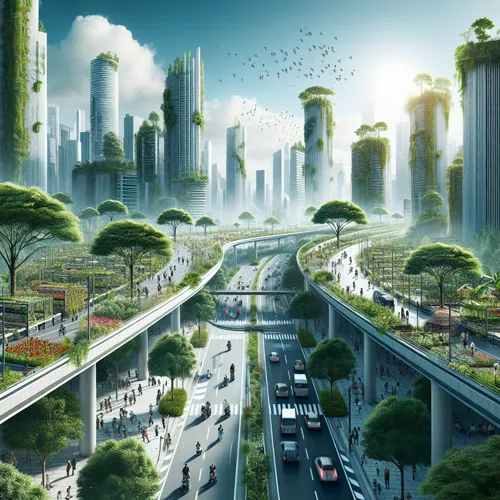Reforestation isn’t just a task limited to remote forests. Urban areas also have a significant part to play in reforestation projects, as it has numerous environmental, economic, and societal benefits. In this blog post, we will explore the concept of urban reforestation and delve into its impact on various aspects.
Reasons for Urban Reforestation
Environmental Restoration
Urban areas often suffer from an increase in temperature, poor air quality, and reduced green spaces due to rapid urbanization. Trees play a vital role in absorbing carbon dioxide, cooling cities through shade, improving air quality, and enhancing overall environmental health. By incorporating trees and plants into urban environments, we can offset these negative impacts and create a greener and healthier space.
Biodiversity Preservation
Cities can become hotspots for biodiversity when appropriate habitats are provided through reforestation projects. Trees and shrubs create habitats that encourage the presence of pollinators, birds, insects, and small mammals, fostering an urban ecosystem rich in wildlife. Moreover, a more diverse environment supports better ecosystem resilience to climate change and other environmental threats.
Climate Change Mitigation
Planting trees in urban areas not only reduces greenhouse gas emissions by sequestering carbon dioxide, but also helps to decrease the overall heat island effect of cities through shade provision and increased evapotranspiration. This aids in reducing energy consumption for air conditioning while simultaneously improving the quality of life for residents.
Challenges in Urban Reforestation
Limited Space
One of the biggest challenges faced by urban reforestation projects is limited space availability due to densely populated city centers and infrastructure constraints. In these conditions, creative solutions such as rooftop gardens, vertical gardens, green walls, and community parks can maximize available green spaces and increase vegetation cover.
Soil Quality and Pollution
Urban soils often have poor nutrient content and high levels of pollutants like heavy metals and oil. Selecting appropriate tree species and soil remediation techniques is essential to ensure the long-term success of reforestation projects.
Budget and Maintenance Constraints
A lack of funding and ongoing maintenance can hamper urban reforestation efforts, making it difficult to establish and sustain vegetation in these environments. It’s crucial for cities to prioritize sustainable urban planning, allocating adequate resources to support ongoing tree care programs that encourage citizen involvement.
Success Stories: Inspiring Cities Pioneering Urban Reforestation
Medellín, Colombia
Known as the “City of Eternal Spring,” Medellín transformed itself into a greener and more inclusive city after experiencing rapid growth and social inequality in previous years. The city launched an extensive urban reforestation program that not only revitalized public spaces but also fostered community engagement and encouraged civic pride through environmental stewardship.
Milan, Italy
In response to high levels of air pollution in the late 1980s, Milan established a city-wide green space expansion plan known as “City Life.” This ambitious project involved reforestation efforts on abandoned industrial lands and construction sites, resulting in increased tree cover and improved air quality within the city.
Seattle, United States
Seattle is widely recognized for its commitment to urban forestry, with 10 percent of the city dedicated to parks and green spaces. The city actively manages and expands its urban forest, prioritizing native species that support local wildlife habitats and enhance ecosystem resilience against climate change impacts.
Conclusion
Urban reforestation plays a vital role in addressing environmental challenges facing cities today. By implementing innovative strategies to overcome space constraints and soil quality issues while prioritizing maintenance and budget allocation, we can build greener and more sustainable urban environments that benefit both residents and wildlife alike. With inspiring examples from cities around the world, let’s embrace the power of nature to create healthier and more livable urban spaces for all
